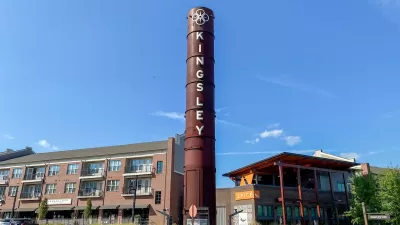Explore how cities can use financial data to enhance urban planning, improve budget allocation, and boost community services.

With financial data, urban planners make smarter decisions and support sustainable growth.
Importance of financial data for smart urban planning
Financial data allows urban planners to create more efficient cities. Take a look at why this data is essential for urban planning initiatives.
Facilitates decision-making and planning
With sound evidence based on financial data, experts can adopt strategies to make a city more efficient and convenient. For example, identifying economic hot spots where people frequently spend money can tell city planners where to invest in revitalization projects.
Improves life for residents
Are people from different counties traveling to one specific grocery store? Are they spending more money at their favorite stores, even if they’re farther away from their homes? Looking at consumer spending patterns can help city planners determine where building new stores or shopping centers might be beneficial, making life more convenient for residents.
How can city planners use financial data?
Here are some ways financial data can be used in urban planning.
1. Reduce the number of food deserts
People living in food deserts can experience health issues like diabetes, cardiovascular disease and micronutrient deficiencies. City planners can help using financial data to identify areas with limited access to fresh food.
If city planners identify areas without sufficient access to healthy food, they can focus on building grocery stores or supermarkets to help residents improve their health and their overall quality of life.
2. Identify economic hot spots
Are spending trends higher in one area of the city than the others? What types of stores and businesses already exist there? Is there a gap that a new business could fill?
Say spending patterns are higher in an area with an upscale Italian restaurant, a boutique and a bookstore. In this area, there might be the potential for a small grocery store, a coffee shop or a pharmacy.
City planners can analyze credit card, mobile pay and point-of-sale data to determine economic hot spots and make them more attractive to new businesses.
3. Optimize public transportation
Explore transit payment data to determine where there is a high need for public transportation options and identify opportunities for improvement. For example, if many people rely on buses to get to work, city planners might invest in creating more bus lines to help keep things less crowded. Working with a certified public accountant can help urban planners manage their accounting and ensure projects are economically viable and sustainable.
4. Identify thriving industries
Financial data can reveal growing industries within a city. For example, the fintech, information technology, software and health care industries are booming in Chicago.
Urban planners who identify emerging industries in their cities can attract new companies, which helps create more jobs.
5. Make payment transactions smarter
City planners focused on going digital and making their cities smarter can use financial data to determine where cash is still the primary transaction method. For example, if research finds that most people still pay for public transportation via cash, there may be an opportunity to encourage card payments.
Integrating financial data into existing urban planning tools
Explore how cities can use financial data alongside existing tools.
Geographic Information Systems (GIS)
GIS interprets geospatial data and provides information on patterns and trends. It is already used extensively in urban planning — in fact, GIS is expected to grow at a compound annual growth rate of 13.07 percent between 2024 and 2031.
GIS can help organize and manage financial data. It reveals patterns to help city planners make more informed decisions. For example, in Los Angeles, GIS software helps plan for employment and housing growth.
Data visualization software
Data visualization software converts raw data into visual elements like charts, graphs, and maps, which makes it much easier to process.
When working on urban planning initiatives, professionals can turn their data about spending habits across different zones into easily digestible graphs. They can also use maps to determine where people shop.
Financial data empowers smart and sustainable cities
Financial data can help urban planners make more informed decisions that benefit their residents and attract new businesses. They can use GIS and data visualization software to organize their data and make it easier to process.

Alabama: Trump Terminates Settlements for Black Communities Harmed By Raw Sewage
Trump deemed the landmark civil rights agreement “illegal DEI and environmental justice policy.”

Planetizen Federal Action Tracker
A weekly monitor of how Trump’s orders and actions are impacting planners and planning in America.

Why Should We Subsidize Public Transportation?
Many public transit agencies face financial stress due to rising costs, declining fare revenue, and declining subsidies. Transit advocates must provide a strong business case for increasing public transit funding.

Understanding Road Diets
An explainer from Momentum highlights the advantages of reducing vehicle lanes in favor of more bike, transit, and pedestrian infrastructure.

New California Law Regulates Warehouse Pollution
A new law tightens building and emissions regulations for large distribution warehouses to mitigate air pollution and traffic in surrounding communities.

Phoenix Announces Opening Date for Light Rail Extension
The South Central extension will connect South Phoenix to downtown and other major hubs starting on June 7.
Urban Design for Planners 1: Software Tools
This six-course series explores essential urban design concepts using open source software and equips planners with the tools they need to participate fully in the urban design process.
Planning for Universal Design
Learn the tools for implementing Universal Design in planning regulations.
Caltrans
Smith Gee Studio
Institute for Housing and Urban Development Studies (IHS)
City of Grandview
Harvard GSD Executive Education
Toledo-Lucas County Plan Commissions
Salt Lake City
NYU Wagner Graduate School of Public Service






























